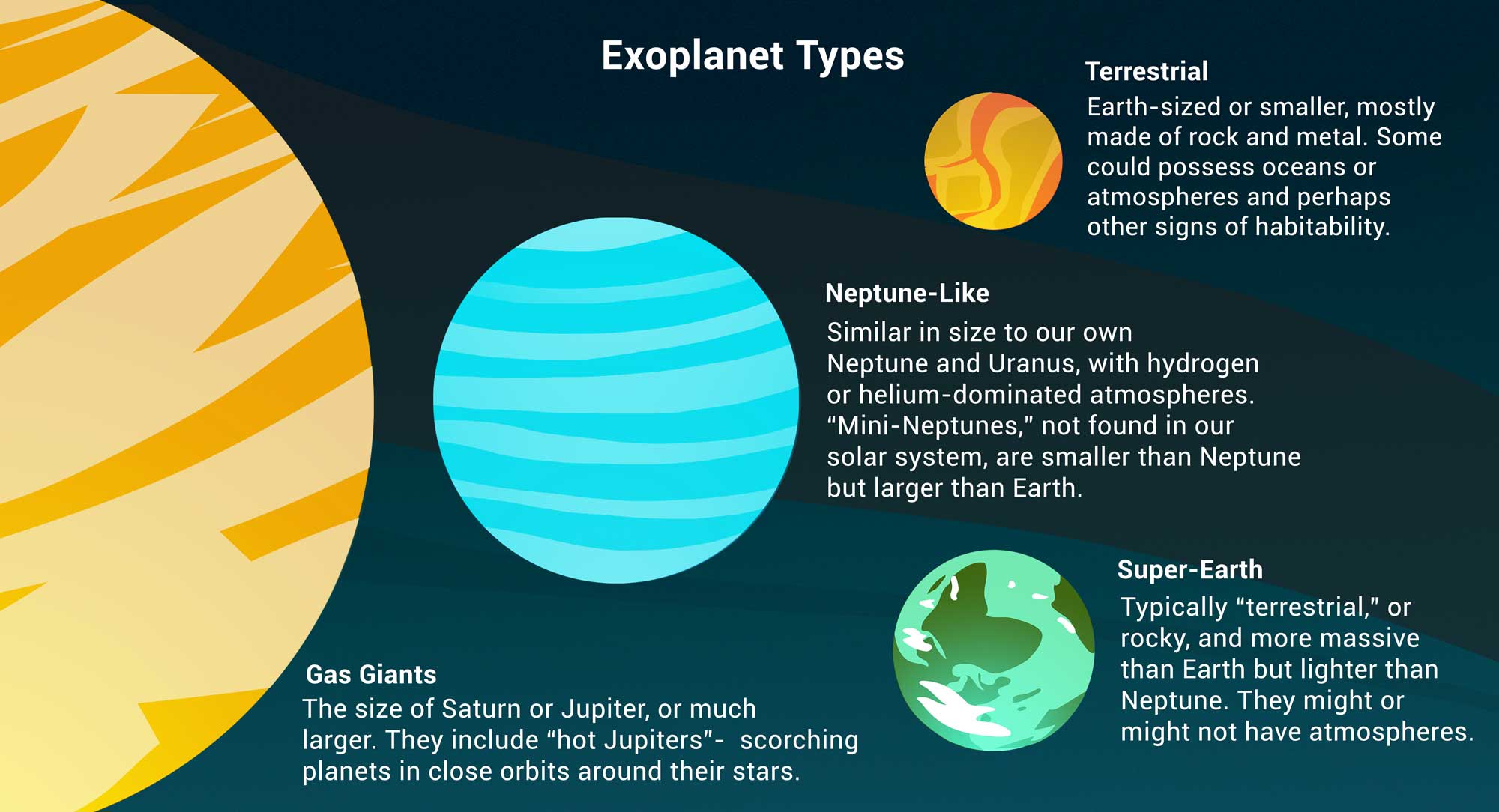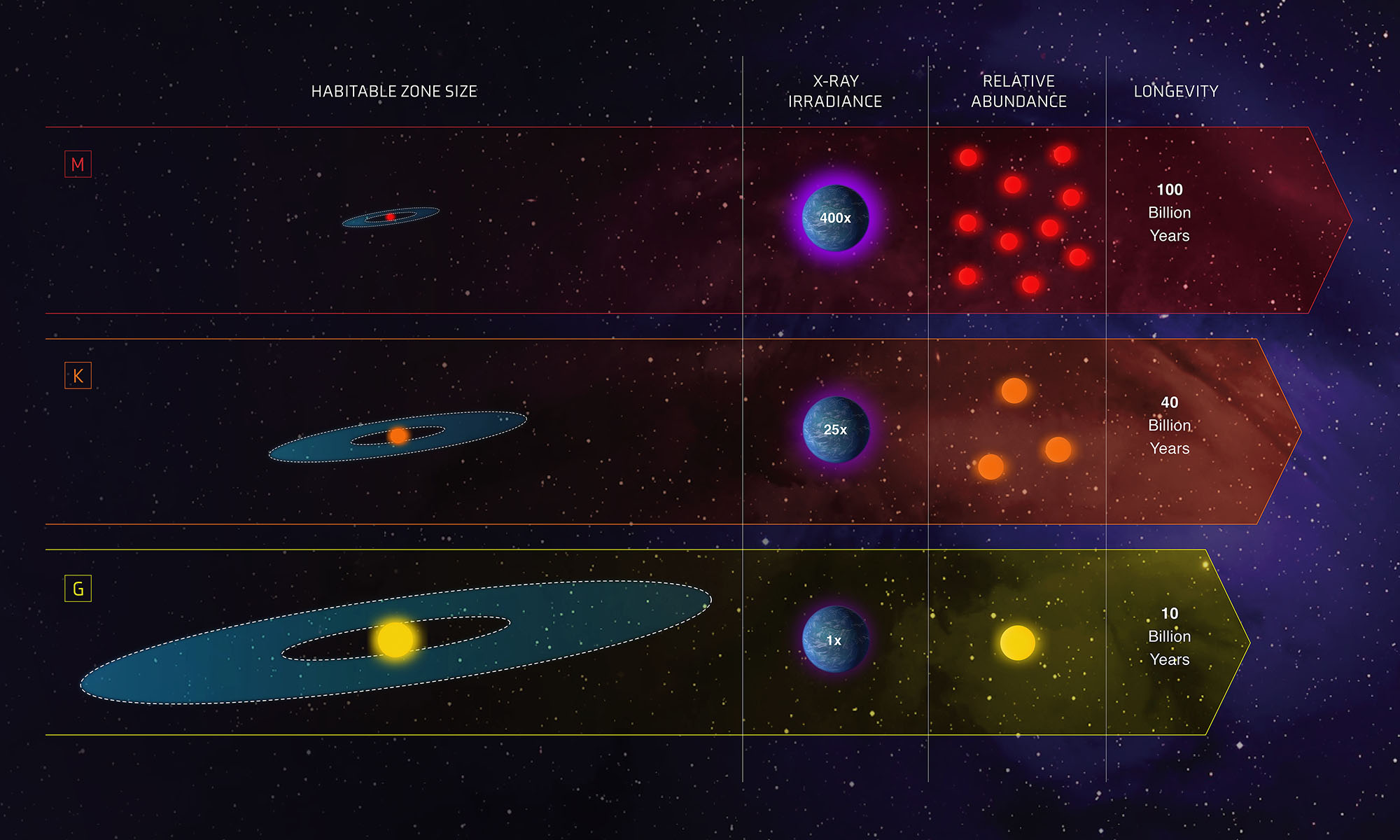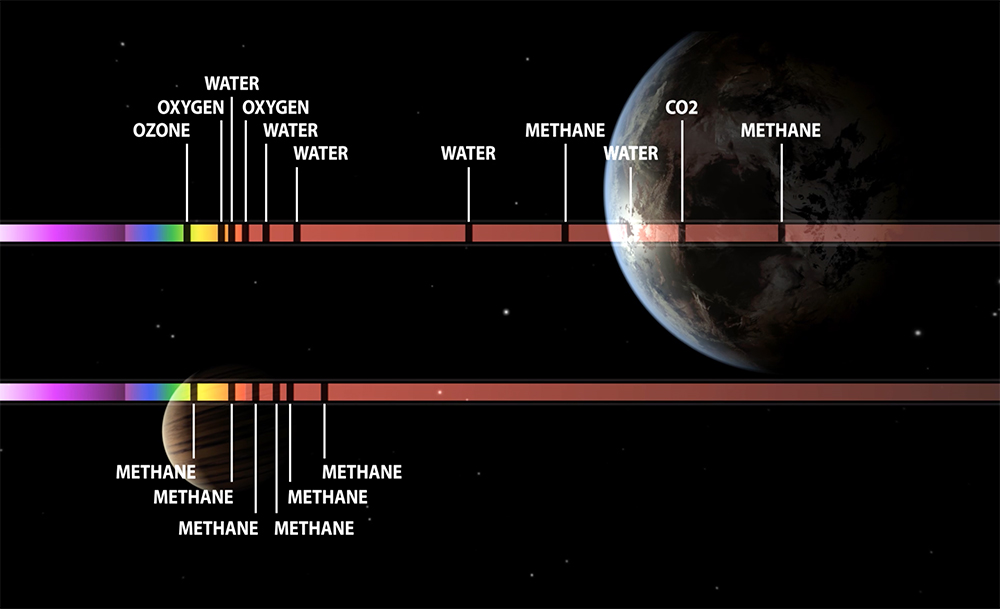Table of Contents
8. Planets around other stars
Just imagine! Before the year 1992, we did not know of any planet orbiting around a star other the sun. After the first discovery, there has been a new boom in planetary science. Exoplanets, planets orbiting around other stars, are being found regularly. More than five thousand have been discovered so far and there are thousands of more detections awaiting confirmation. More importantly, statistical analysis has shown that on average there are more than one planet around every star in our Galaxy. Other galaxies should be no different.
So the case is settled. Every star has planets, there are hundreds of billions of stars in a galaxy and there are more than a trillion galaxies in the universe. All in all, there are trillion trillion planets in the universe. Who knows how many of them can harbor life, maybe even ‘intelligent’ life-forms like us.
1. Three ways to find a planet
But how did we find so many exoplanets? There are at least five ways to find a planet orbiting around a distant star. Planets are very small and faint, we cannot observe them directly, but we can detect them via their influence on their parent star.
We have discussed three of the five methods during the lecture in the classroom.
1.1 Radial velocity
The first one relies on the shortening and lengthening of light coming from a star hosting a planet. Let me try to explain.
You have to understand two things. First, a planet actually does not orbit around a star. Rather, both the star and the planet orbit around their common center of mass. What is this center of mass.

Imagine a lever with a fulcrum balancing two unequal objects: 100 kg and 5 kg. Of course the fulcrum (the balancing wedge below, purple color) has to be very close to the heavier ball in order to keep the lever straight, horizontal. Now imagine the heavy mass to be a star and the smaller one to be a planet. The position of the fulcrum would be their common center of mass, and both of them would orbit around that position. The position of course is very close to a star, sometimes even inside the surface of the star, but never at the center of the star.
The smaller circle shows the orbit of the star and the bigger the circle the orbit of the planet. If there is a planet around a star, the star would move like this and this movement is called wobble. If a star is wobbling, it has a planet. But how do we detect the wobble?
Here comes the second thing that you have to understand with some care. When a train comes closer to you, its horn seems to be at a high pitch, and when it moves away its horn is heard at a low pitch. When the train approaches you, you receive its sound at a higher frequency, shorter wavelength, higher pitch. When the train moves away, your ear receives its sound at a lower frequency, longer wavelength, lower pitch.
Now apply this experience to stars and their light. When a star approaches you, your telescope would receive its light at a shorter wavelength. Blue lights are shorter, red lights are longer. So an approaching star would appear bluer than normal. And when a star moves away from you, your telescope receives its light at a longer wavelength, and the star appears redder.
This effect is clearly shown in the above video. Of course the orbital plane of the star has to be directly along your line of sight. Only then a wobbling (orbiting) star would sometimes approach you and sometimes move away from you. You see the light wave from the star below the orbit in the video. The wave gets longer and redder when the star moves away and shorter and bluer when the star comes closer. Whenever the light from a star does this, you know the star is wobbling, meaning it has one or more planets? But one or more?
More than a thousand planet have been found via this method. You need a spectrograph for analyzing the spectrum of starlight and measure the amount of redshift and blueshift for such discoveries.
Question: why is it called the radial velocity method?
This method only tells you the mass of the planets orbiting the star, but how do we know their size? If we know both the size and the mass, we can find a planets density and the density can tell us a lot of things about the composition of the planet. This is why the radial velocity method is combined with the next method.
1.2 Transit
The next method is simpler and its gives the sizes of planets. For this, the orbital plane of the planet, that is the plane of the planetary system has to be along your line of sight as well, similar to the radial velocity method. But unlike the radial velocity method, here you can find the number of planets orbiting around a star easily. Watch the video first.
When a planet passes in front its parent star as your telescope is looking at the star, some of the starlight is blocked by the planet, and the total amount of starlight decreases. In the video, you see the variation of light with time on the bottom left corner. When the planet passes, or transits, the star, the line showing the level of light drops to a lower level and, then, comes back to its initial level after the planet crosses the star completely. This line showing the light with time is called a light curve and the dip in the light curve can be used to find a planet and its size.
Because the depth of the dip depends on the size of the transiting planet. The bigger the planet, the deeper the dip as you see in the second part of the video.
And the shape of the dip can tell you exactly how many planets are orbiting around a star. This is shown in the last part of the video. There will be a dip for every planet transit. If two planets transit their star at a time, you will get a dip on top of another dip. The first dip is caused by the planet that blocks your view of the star first, and then the second planet comes in front of the star and creates a further dip. So the shape of the dip becomes more complex.
1.3 Direct imaging
Using the two above methods we can find planets which are orbiting, fortunately, on the same plane as our line of sight. But of orbital planes can be in any orientation. Here comes the direct imaging which would work best if the plane of the orbits is directly perpendicular to our line of sight, if are looking at the planetary system face-on.

Here you see the direct image of 4 planets orbiting around a star captured by the telescopes of the famous Keck Observatory. But we do not see any star in the image, only the four dot-like things orbiting a central blocked region. Why?
Because it would be impossible to see the planets if the star was there. The planets are observed because of the the starlight they reflect and this would not be enough to make them visible to us because their star would whitewash everything. For the same reason we cannot see any star during the day one earth.
In order to take direct images of planets, therefore, we have to block the light coming from the sun. And this can actually be done by using a blocking filter within the telescope. Exactly this was done to take the above real photo.
This photo is a collection of many images taken over 7 years at the Keck Observatory. The planets are orbiting the star very slowly indeed. The scale of 20 au is shown in the image. Remember that 1 au (astronomical unit) is the distance from sun to earth.
Only around sixty planets have been imaged directly.
2. Planet zoo
Now that you have some rudimentary ideas about the ways of detecting planets around other stars, let us gather information about all exoplanets discovered until now and try to understand the general properties of planets. Before the discovery of exoplanets, solar system planets were the only samples for studying planets. After discovering more than five thousand planets, we see that there are many possibilities. Planets come in many different masses, sizes, densities, compositions and temperatures.
So far exoplanets have been classified into four types: gas giant, Neptune-like, super-Earth and terrestrial. The names are self-descriptive.

Gas giants are giants like Jupiter and Saturn, composed almost completely of gas (hydrogen and helium) swirling around a very small solid core. Many gas giant exoplanets are much closer to their star than Jupiter is to the sun. Many of them are also bigger than Jupiter. A famous gas giant is 51 Pegasi b orbiting around the star 51 Pegasi. Explore another example in the website of NASA: Kepler-7b.
Neptune-like planets have a thick gaseous atmosphere surrounding a rocky core similar to Uranus and Neptune. In our solar system Uranus and Neptune also have frozen water, ammonia and methane in the atmosphere and, hence, are called ice giants. Ice giant exoplanets have also been found. Explore a famous Neptune-like exoplanet: HAT-P-11b.
Super-Earths are bigger than earth but lighter than the Neptune-like planets. They can be made of gas or rocks, we are not sure. They can be as much as 10 times heavier than earth. The largest super-earths are somewhat similar to the smallest Neptune-like planets, so they can also be called mini-Neptunes. Explore the most famous super-Earth: Kepler-22b.
Terrestrial planets can have radius from half of earth up to twice as much as earth. If radius is more than two times of earth, it will be considered super-Earth. Terrestrial planets are rocky like Mercury, Venus, Earth and Mars of our system. They can have gaseous atmosphere much thinner than Neptune-like planets. There could be more than 10 billion terrestrial planet in our Galaxy, but we have discovered only around 200. Explore as many as 7 terrestrial planets around the star TRAPPIST-1.

Now let us put all the discovered exoplanets (more than 5000) in a single graph where the horizontal axis shows the orbital period (earth-days it takes to move around its star once) of the planet and the vertical axis shows its size relative to earth.
The planets on the top are the largest, the gas giants. If they orbit around their star once in less than 100 days, they must be very close to their star and, therefore, very hot. These are called hot Jupiters. If they take more than 100 days to move once, they must be far away from their star and, therefore, they are cold gas giants like our own Jupiter and Saturn. The gas giants are more than 10 times bigger than earth.
Planets that are between 4 and 10 times bigger than earth are either super-Earths or Neptune-like. Super-Earths that have immense oceans are called ocean worlds. And Neptune-like planets that have frozen water, ammonia or methane are called ice giants.
Finally, the planets that have sizes similar to earth are the terrestrial or rocky planets. If they are extremely close to their star, the temperature will be very high and they will become lava worlds. Small planets like earth are difficult to detect specially if they are far from their star. This is frontier where current exoplanet hunting telescopes are focusing on.
3. Habitable zone
We have not found life anywhere outside earth. It is reasonable to assume that the evolution of life on other planets would be somewhat similar to earth. On earth, the most fundamental compound needed for life was liquid water. So we have defined a habitable zone around a star based on whether water can exist as a liquid on a planet within that zone. Watch the following video and then read on to understand more.
Around each star there is a range of distances where a planet’s temperature would be just right for harboring liquid water. Earth is in the habitable zone of the sun. If you are closer to the sun, like Mercury, temperature would be too high and water would evaporate away. If you are farther away, like Mars, water would become frozen. Venus and Mars are actually right at the borders of our habitable zone, but Earth is right in the middle of the zone with a comfy little average temperature of 15 degrees. Average surface temperature on Venus is more than 400 degrees and on Mars it is less than -40 degrees.

Of course the distance and thickness of the habitable zone would depend on the surface temperature of the star. In this image, you see three types of stars: stars like the Sun are called G-type stars. K-type stars are cooler and smaller, and M-type stars are even more cold and small. Obviously the habitable zone of a K-type star would be smaller and closer to the star compared to that of the sun. And for M-type stars, the habitable zone would be even smaller.
There is a problem if your habitable zone is too close to your star. Stars emit a lot of harmful x-ray and ultraviolet radiation. If you are too close, the life in your planet would be destroyed because of too much x-ray irradiance (don’t worry about the technical terms).
But being closer to a smaller star is not always bad. The last two columns of the image actually shows two advantages of having a smaller habitable zone around a smaller and cooler star. Smaller stars live longer and there are more small stars in the solar system. G-type stars like our sun lives for only 10 billion years, but M-types stars live for 100 billion years. And there are more M-type stars in our Galaxy. So, who knows, maybe there are more habitable planets and life around K-type stars and maybe in future there will be more life around M-type stars. Just a speculation!
Here is an earth-size planet orbiting in a habitable zone found recently:
4. Life
Let us say after 30 years, we find more than hundred habitable planets, planets orbiting in the habitable zones of their parent stars. The question, how would we know if they really have life or not? Being in the habitable zone does not guarantee the existence of life. Moon (although a satellite) is right in the habitable zone of the sun with us, but it cannot harbor life. So just by discovering a planet in a habitable zone, we cannot confirm the discovery of extraterrestrial life, let alone intelligence.
So, how do we find life on other planets. The answer lies in the atmosphere, literally blowing in the wind.

When we observe a distant star, its light might come to us through the atmosphere of one of its planet. We have to pick a time when the planet is so close to its star that starlight will pass through the planetary atmosphere on the way to us. Molecules in the atmosphere will absorb the light of some specific colors. After we receive the starlight, we will analyze the spectrum of the light to see which colors are missing. Each missing color will tell us the existence of a certain molecule in the atmosphere of the planet. This way we can find the composition of the atmosphere and the composition can tell us whether there is life on that planet or not.
It is obvious that a planet with life has a very different atmosphere compared to a lifeless planet. A life-harboring planet might have water, oxygen, ozone, methane and CO2 (carbon-di-oxide) in its atmosphere. We know which colors these compounds absorb. If we see exactly those colors missing in the light of a star, we could speculate that the star has a planet with water, oxygen, ozone, methane and CO2 in its atmosphere.
This is how we are searching for life elsewhere without any success as of now. But the future is promising.